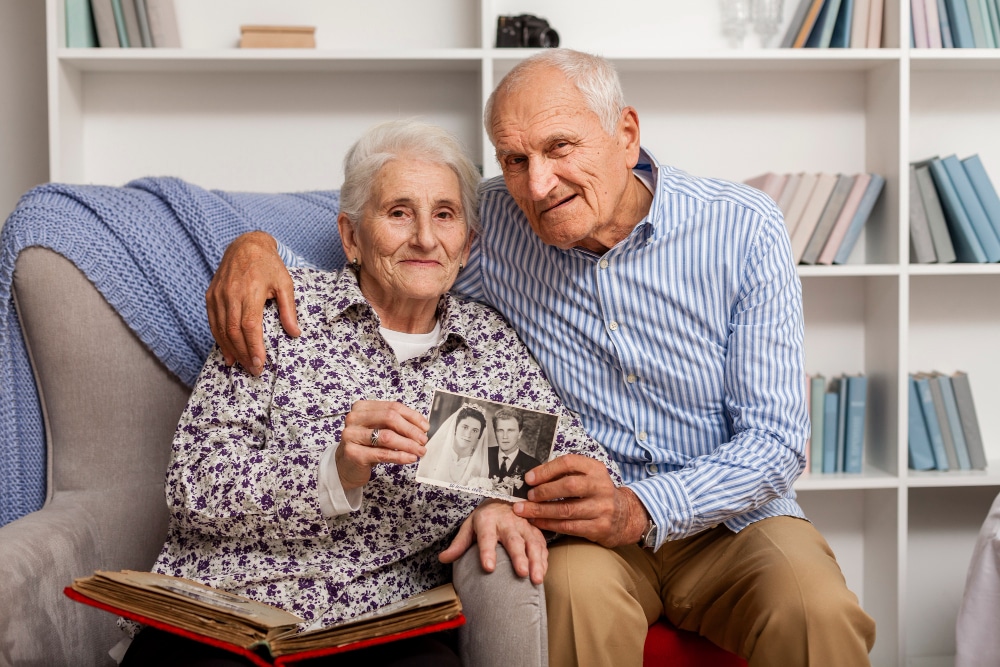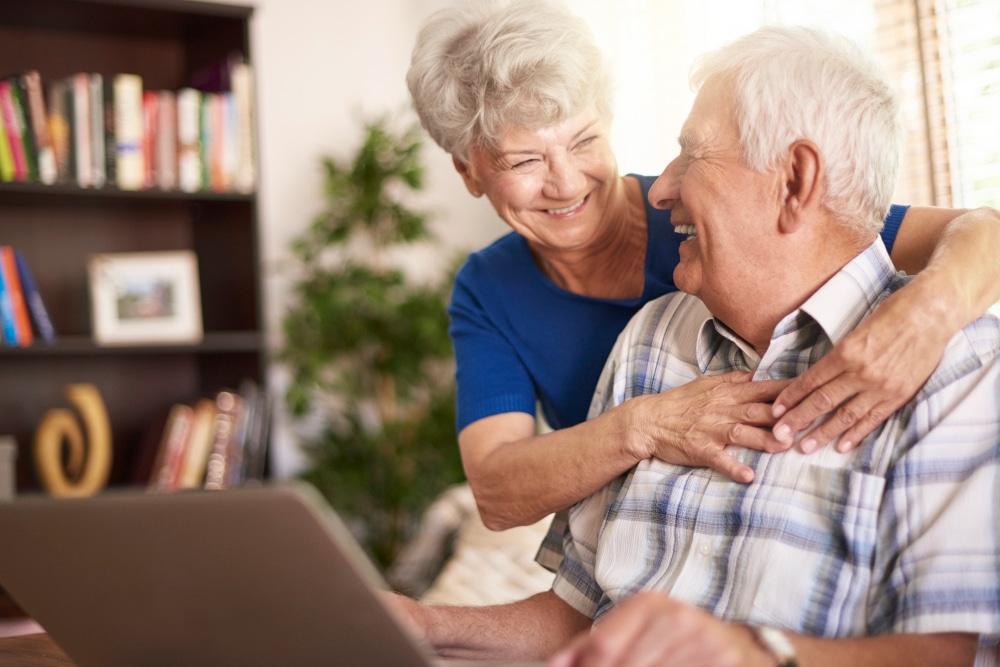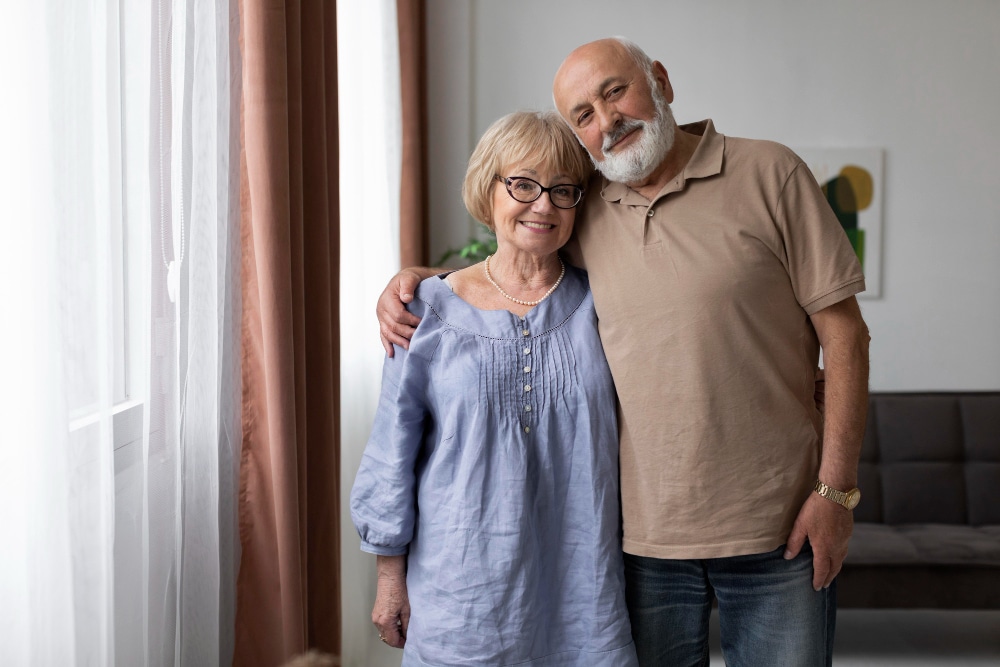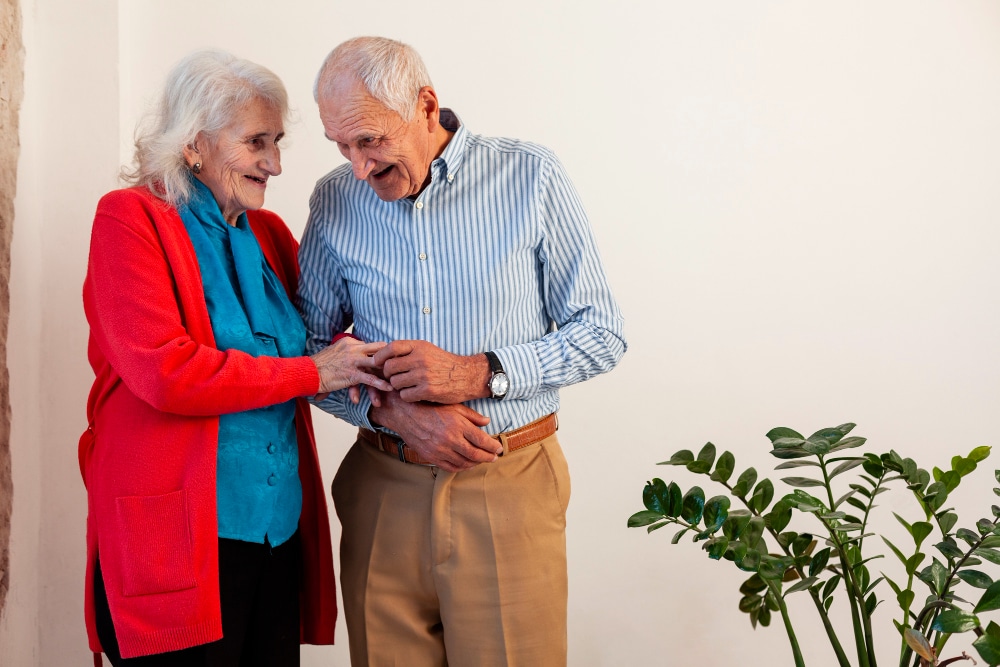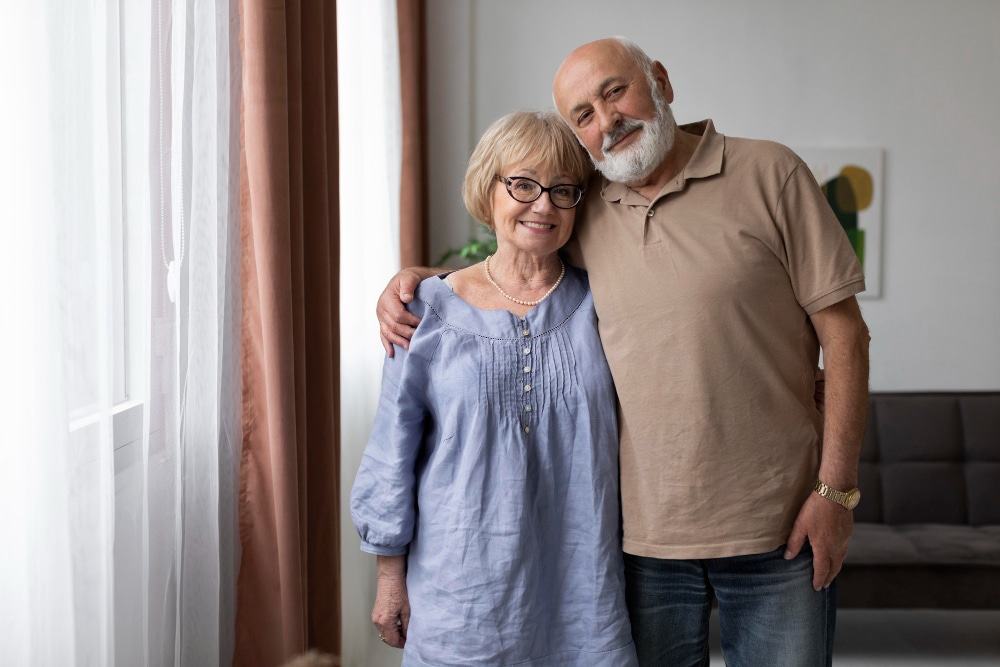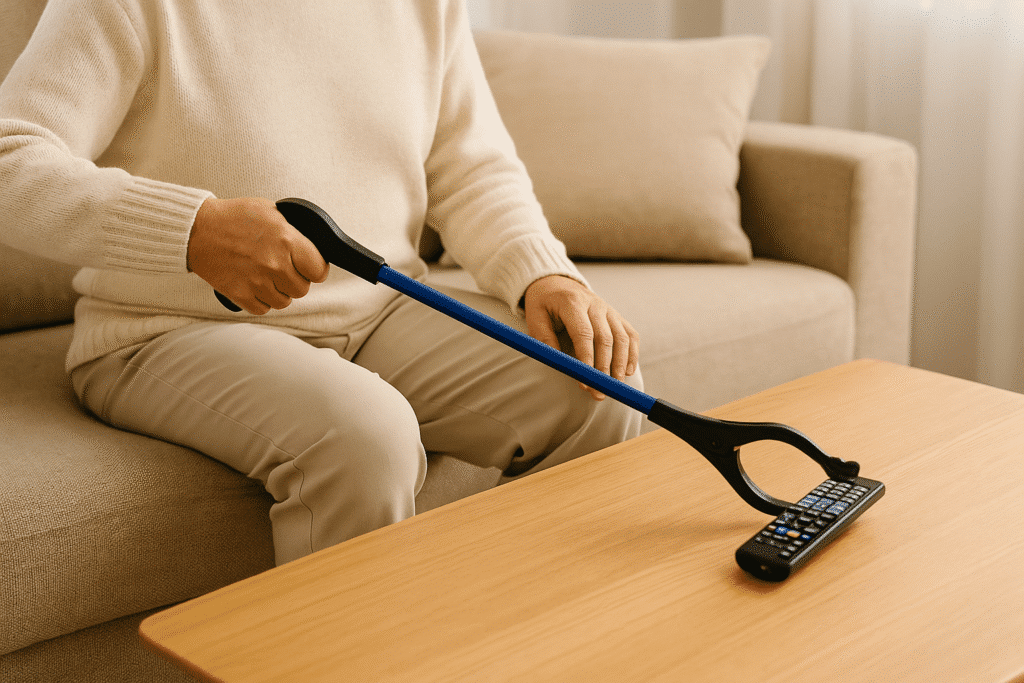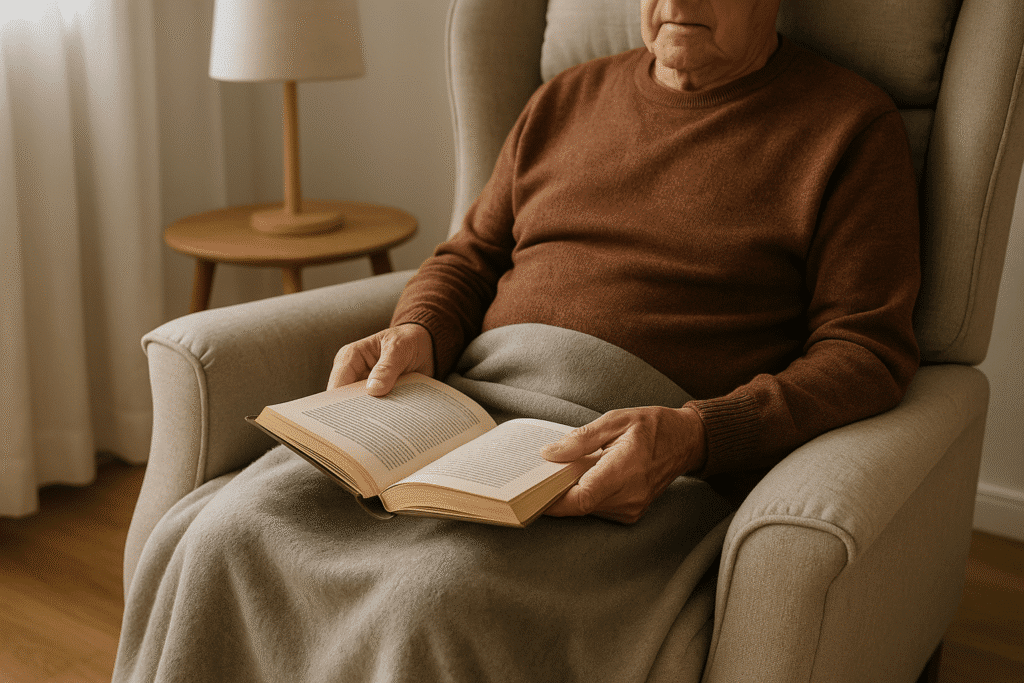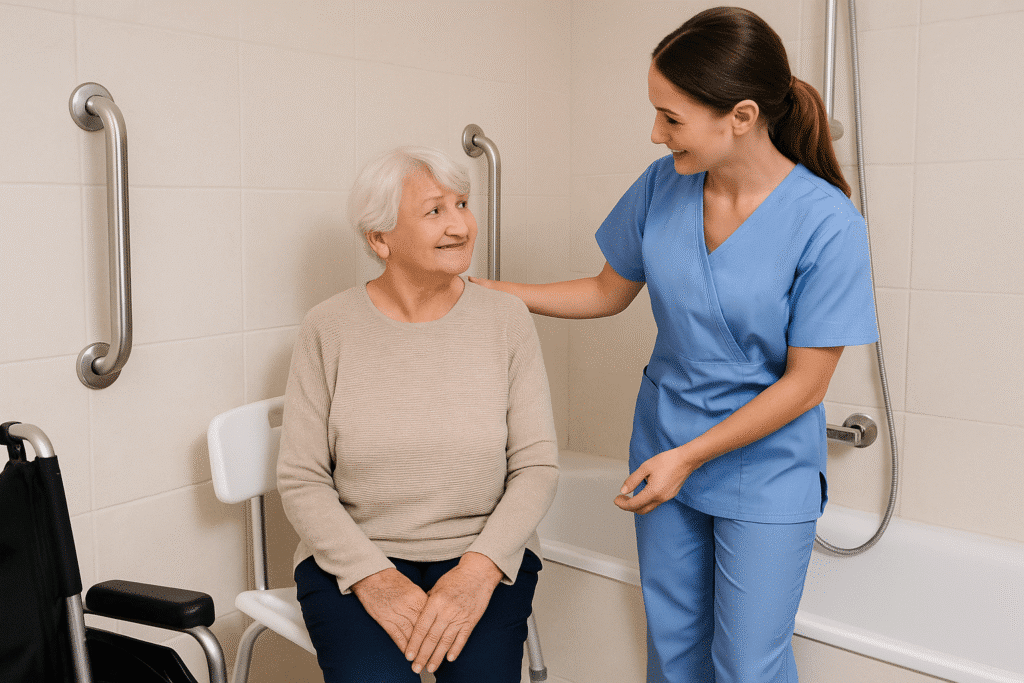Staying active doesn’t have to mean stressing your joints. Low impact exercises for seniors are gentle on the body while offering real benefits for strength, balance, and heart health.
If you’re looking for ways to move more safely as you age, these exercises are a smart and sustainable choice.
Key Summary:
- Low impact exercises help seniors stay active without stressing their joints.
- Gentle movement improves balance, strength, and heart health at any age.
- Exercises like walking, swimming, and yoga support mobility with minimal risk of injury.
- Daily movement builds confidence and independence for seniors living at home.
What Are Low Impact Exercises?
Low impact exercises are movements that minimize stress on your joints while still improving your fitness. They involve smooth, controlled motions that don’t require jumping or pounding, making them ideal for older adults or anyone with arthritis or mobility issues.
Unlike high-impact workouts that put pressure on your knees or hips, low impact options like walking, water aerobics, yoga, and cycling allow you to move at your own pace.
Many can be done seated or adapted for limited mobility. These exercises help improve heart health, flexibility, and strength, without causing strain or injury.
Benefits of Low Impact Exercise for Seniors
Gentle movement offers powerful health gains for older adults. Here’s how low impact exercise supports healthy aging:
Joint Protection
Low impact exercise protects your joints from wear and tear. Movements like swimming, cycling, and chair yoga reduce stress on the knees, hips, and ankles.
This is especially helpful for people with osteoarthritis or joint pain.
These exercises support mobility without worsening inflammation or causing long-term damage.
Improves Balance and Reduces Fall Risk
Regular low impact activity improves balance, which helps prevent falls.
One in four adults over 65 falls each year in the U.S., and about 20% of those falls cause serious injuries like broken bones or head trauma.
Exercises like tai chi, yoga, and walking strengthen the muscles that keep you steady and confident on your feet.
Boosts Mood and Cognitive Health
Gentle movement boosts mental well-being. Studies show that exercise improves sleep, reduces anxiety, and sharpens memory, especially in older adults.
Activities like dancing or water aerobics not only move the body but lift the spirit, helping you stay socially connected and emotionally balanced.
Maintains Muscle and Independence
Low-impact strength exercises help maintain muscle mass and function.
This matters because age-related muscle loss (sarcopenia) can make it harder to lift, bend, or climb stairs.
By adding resistance bands or light weights to your routine, you support everyday activities and reduce your risk of needing help later on.
8 Best Low Impact Exercises for Seniors
Here are some of the best low impact exercises for seniors that support strength, balance, and mobility:
- Walking
- Swimming & Water Aerobics
- Yoga and Chair Yoga
- Tai Chi
- Cycling and Stationary Bikes
- Resistance Band and Light Weight Training
- Chair Exercises
- Dancing or Barre
Each of these exercises is gentle on the joints while helping older adults stay active, independent, and energized. Let’s take a closer look at how they work and how to get started.
1. Walking
Walking is one of the simplest and most effective low impact exercises for seniors.
It strengthens the legs, boosts cardiovascular health, and supports bone density, all without needing any equipment.
How to do it:
- Put on comfortable, supportive walking shoes.
- Choose a safe, flat, and well-lit area (indoor or outdoor).
- Begin at a relaxed pace to warm up.
- Walk for 10–30 minutes, depending on your comfort.
- Use a cane or walk with a companion if balance is a concern.
- Cool down with a few minutes of slower walking and deep breathing.
2. Swimming & Water Aerobics
Swimming and water aerobics provide a full-body workout with almost zero joint strain.
The water’s natural resistance builds strength while reducing impact, making it ideal for arthritis or post-surgery recovery.
How to do it:
- Find a local pool or senior-friendly water aerobics class.
- Enter the pool gradually using stairs or a lift if needed.
- Start by walking slowly in the shallow end.
- Add gentle arm circles or light kicking as you move.
- Follow instructor-led movements if in a class.
- Keep your pace light and comfortable to avoid fatigue.
3. Yoga and Chair Yoga
Yoga improves flexibility, balance, and posture, key for fall prevention.
It also helps reduce stress and calm the mind. Chair yoga makes it accessible for those with limited mobility.
How to do it:
- Choose a quiet, clutter-free space and a non-slip mat or sturdy chair.
- Sit or stand with good posture.
- Follow a senior yoga video or in-person class.
- Begin with gentle movements like shoulder rolls or neck stretches.
- Add poses like seated twists, forward folds, and overhead stretches.
- Focus on deep, slow breathing throughout the session.
4. Tai Chi
Tai Chi is a slow, flowing martial art that enhances balance, coordination, and relaxation.
Studies show it significantly reduces the risk of falling and improves stability in older adults.
How to do it:
- Wear loose, comfortable clothing and non-slip shoes.
- Stand in an open area with enough room to move freely.
- Follow a beginner Tai Chi video or attend a local class.
- Start with simple movements like “wave hands like clouds.”
- Move slowly and smoothly, focusing on your breath.
- Repeat the sequence for 10–20 minutes, or as tolerated.
5. Cycling and Stationary Bikes
Cycling strengthens the legs and improves cardiovascular fitness without pounding the joints. Stationary bikes provide the same benefits with added safety and convenience.
How to do it:
- Adjust the seat height of your stationary or recumbent bike.
- Sit comfortably with feet flat on the pedals.
- Start pedaling at a gentle pace to warm up.
- Maintain steady breathing and moderate resistance.
- Cycle for 5–15 minutes to begin, increasing over time.
- Finish with a 1–2 minute cooldown at a slower pace.
6. Resistance Band and Light Weight Training
Strength training helps preserve muscle mass and supports daily activities like lifting groceries or standing from a chair.
Light weights and resistance bands are safe, portable, and easy to adapt.
How to do it:
- Choose a resistance band or light weights (1–3 lbs).
- Sit or stand with a straight back and feet hip-width apart.
- Start with bicep curls: hold the weights and curl arms toward your shoulders.
- Add shoulder presses: raise weights or band overhead and slowly lower.
- Try seated rows: pull the band while keeping elbows close to your body.
- Perform 1–2 sets of 10–15 repetitions for each movement.
7. Chair Exercises
Chair exercises are ideal for seniors with limited mobility, balance concerns, or recovering from injury. They still offer real benefits for flexibility, strength, and circulation.
How to do it:
- Sit in a sturdy, armless chair with feet flat on the ground.
- Start with seated marches: lift one knee, then the other.
- Do leg lifts: extend one leg straight, hold briefly, and lower.
- Add toe taps or heel taps for ankle mobility.
- Raise arms to the side or overhead for upper body movement.
- Do each movement 10–15 times, resting as needed.
8. Dancing or Barre
Dancing is a joyful way to move while boosting heart health, balance, and coordination. Barre combines ballet-inspired moves with stability support, making it great for flexibility and posture.
How to do it:
- Wear comfortable clothes and supportive shoes.
- Stand near a sturdy chair or countertop for balance.
- Begin with basic movements like side steps or light toe taps.
- Add arm movements or gentle plies (bending knees slightly).
- Play your favorite music to stay motivated.
- Dance for 10–20 minutes or until you feel comfortably tired.
Exercises You Can Do at Home (No Equipment Needed)
You don’t need a gym membership or fancy equipment to stay active. These simple exercises can be done right at home, using just your body weight and a sturdy surface.
Chair Squats
Chair squats build lower body strength and improve balance. They also support safe movements like sitting down and standing up from a chair.
How to do it:
- Stand in front of a sturdy chair with your feet hip-width apart.
- Keep your back straight and arms extended for balance.
- Slowly lower yourself down as if to sit—but stop just before touching the chair.
- Press through your heels to stand back up.
- Repeat 10–15 times.
Wall Push-Ups
Wall push-ups are great for building upper body strength without stressing your wrists or shoulders. They help improve arm, chest, and core muscles.
How to do it:
- Stand facing a wall, about an arm’s length away.
- Place your hands flat against the wall at shoulder height.
- Keep your body straight and engage your core.
- Bend your elbows to slowly bring your chest toward the wall.
- Push back to the starting position.
- Aim for 10–15 reps.
Arm Circles
Arm circles improve shoulder mobility and warm up the upper body. This gentle motion helps prevent stiffness and supports everyday reaching movements.
How to do it:
- Stand or sit with your feet flat on the floor.
- Extend your arms straight out to the sides at shoulder height.
- Make small forward circles for 10 seconds, then gradually increase size.
- Reverse direction and do backward circles for another 10 seconds.
- Do 2–3 sets.
Gentle Neck Stretches
Neck stretches relieve tension and improve flexibility in the upper spine. They’re especially helpful if you sit for long periods or have stiffness.
How to do it:
- Sit or stand with your back straight.
- Gently tilt your head toward your right shoulder (don’t raise your shoulder).
- Hold for 15–30 seconds.
- Return to center and repeat on the left side.
- Repeat 2–3 times on each side.
Seated and Adaptive Options (for Wheelchair Users or Limited Mobility)
Even with limited mobility, you can stay active with modified, seated exercises. These movements help improve circulation, strength, and mood.
- Seated marches: Lift one knee at a time while sitting tall in your chair. This activates your hip and core muscles.
- Seated arm raises: Raise your arms overhead or out to the side to build shoulder strength. Add light weights or water bottles if you’re ready.
- Resistance band stretches: Use a loop or band to perform bicep curls, shoulder presses, or leg extensions while seated.
- Chair yoga: Follow a gentle routine that includes neck rolls, torso twists, and side bends, all from the comfort of a chair.
- Wheelchair dancing or movement to music: Moving your upper body rhythmically to music is not only fun, it’s great cardio too.
How Often Should Seniors Do Low Impact Exercise?
Most seniors should aim for at least 150 minutes of low impact exercise per week, plus 2 days of strength training. That breaks down to about 30 minutes a day, five times a week.
Start with shorter sessions, such as 10 minutes in the morning and 10 minutes in the evening, and gradually build up as you feel stronger.
Every bit of movement counts, especially if it helps with balance, flexibility, and heart health.
According to the CDC, seniors benefit most from regular, moderate activity spread throughout the week.
Mixing cardio, strength, and balance-focused exercises keeps your body well-rounded and helps prevent injury or fatigue.
Listen to your body and rest as needed, but keep moving consistently for the best results.
Safety Tips for Starting a New Routine
Starting a new exercise routine is exciting, but it’s important to stay safe, especially as you age. Here are a few smart tips to help you ease into movement with confidence:
- Talk to your doctor first if you have health conditions or haven’t exercised in a while.
- Start slow and steady. Begin with short sessions and build up gradually.
- Listen to your body. If something hurts or feels off, stop and rest.
- Use proper footwear to support balance and reduce the risk of slips.
- Stay hydrated before, during, and after your workout.
- Avoid cluttered or slippery spaces to minimize fall risks during movement.
- Use a chair, cane, or wall for support if needed for balance.
Final Words
Low impact exercises offer seniors a safe, effective way to stay strong, mobile, and independent.
Whether you’re walking, doing chair yoga, or dancing in the living room, movement matters, and consistency is key.
Start where you are, move at your own pace, and choose exercises that feel good for your body. Staying active doesn’t have to be intense; it just has to be intentional.
FAQs
What are the best low impact exercises for seniors with joint pain?
Water aerobics, chair yoga, and tai chi are excellent options because they reduce pressure on the joints while gently improving strength and flexibility.
Can seniors do strength training without heavy weights?
Yes, resistance bands, bodyweight movements, and light hand weights are safe and effective for maintaining muscle as you age.
Is walking enough for older adults?
Walking is a great foundation. It improves heart health, balance, and endurance. For best results, pair it with strength and flexibility exercises each week.
How do I exercise safely if I’ve had a fall before?
Start with seated or balance-supported activities, like chair exercises or tai chi. A physical therapist can also guide you with a personalized, safe plan.
Kevin leads ElderSavvy’s product testing with a focus on real-life usability. With years of experience evaluating senior-friendly tools, he ensures every recommendation is practical, comfortable, and built for daily use—just like he’d choose for his own family.

